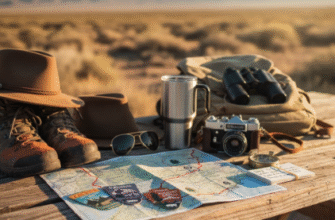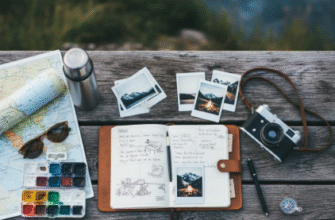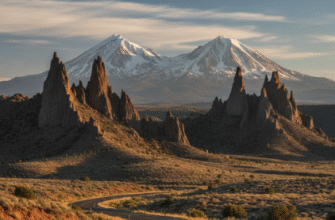I spent three hours last summer staring at my phone in a parking lot outside Albuquerque, trying to figure out which app would actually help me not miss the turn to Bandelier National Monument.
Here’s the thing about navigation apps—they’ve gotten so good at the basic task of getting you from point A to point B that we’ve stopped noticing how terrible most of them are at the stuff that actually matters on a road trip. I’m talking about the ability to save multiple stops without the app having a meltdown, or to recieve suggestions for scenic routes instead of just the fastest interstate slog, or—and this feels like asking for the moon—to let you share your entire route with someone else without forcing them to download three different apps and create an account they’ll never use again. Roadtrippers probably comes closest to solving this mess, though it’s got its own quirks that’ll make you want to throw your phone out the window around hour four of planning. The app lets you string together waypoints like beads on a necklace, add notes about why you’re stopping at each place (critical when you’re traveling with someone who needs to know that yes, we ARE driving two hours out of the way for pie), and it estimates fuel costs, which sounds boring until you’re on day six of a cross-country drive and suddenly very interested in whether that detour to see the world’s largest thermometer is going to cost you an extra tank of gas. But the free version caps you at seven stops, which is absurd—have these people never planned an actual road trip?—and the premium subscription feels steep at $36 a year for something you might only use twice.
Google Maps remains the default for most people, and I get it. It’s already on your phone, it knows where you live (maybe too well), and it’s genuinely excellent at real-time traffic avoidance. But trying to plan anything beyond a simple there-and-back journey turns into an exercise in frustration. You can add up to nine additional stops, which sounds generous until you realize you can’t reorder them without deleting and re-adding everything. Also—and I cannot stress this enough—the app absolutely will not let you browse what’s near your route without zooming in manually to every single segment of the drive.
The Apps That Actually Understand What ‘Scenic Route’ Means
Komoot showed up on my radar two years ago when a friend who bikes everywhere kept insisting it wasn’t just for cyclists.
Turns out he was right, though the interface definitely still feels like it’s trying to convince you to ditch your car and grab a mountain bike instead. What makes Komoot different is its genuinely obsessive approach to route types—you can filter for curvy roads (critical for anyone who finds interstates soul-crushing), avoid highways entirely, or optimize for what the app calls “scenic beauty,” which apparently involves some kind of algorithm trained on user data about where people stop to take photos. I’ve tested this on drives through the Smokies and the Oregon coast, and it’s… honestly pretty impressive? The routes it suggests aren’t always faster—sometimes they’re definately slower—but they’re almost never boring. The catch is that you have to buy regional map packages à la carte, which feels like a weird throwback to the days of buying individual MP3s instead of just streaming music. Europe costs €30, the entire US is €30, and if you want worldwide coverage it’s €60, which I guess makes sense if you’re planning to drive across multiple continents, but feels excessive for someone who mostly just wants to avoid I-70 through Kansas.
When You Need Your Road Trip to Feel Like a Collaborative Document
Wait—maybe I should back up.
The actual problem with most navigation apps isn’t that they can’t get you places. It’s that they assume you’re traveling alone and making all the decisions yourself, which is almost never how road trips actually work. Sygic Travel gets this right in ways that feel almost eerie, like someone at the company has actually been on a road trip with other humans who have opinions. You build an itinerary—hotels, restaurants, hikes, that weird museum about typewriters you saw on Atlas Obscura—and then you can share the whole thing with your travel companions, who can add their own suggestions, vote on options, and generally turn your carefully planned route into a democracy that might actually convince everyone to stop complaining in the back seat. The app syncs across devices without throwing a tantrum, works offline if you download the maps in advance (critical in Montana), and includes these surprisingly detailed city guides that feel like someone actually went there instead of just scraping data from Wikipedia. I used it last fall planning a Southwest loop with three friends, and the collaborative features meant we only had one major argument about whether to skip Zion in favor of more time in Moab, instead of the usual twelve arguments spread across three weeks of group texts.
The Weird Niche Apps That Solve Problems You Didn’t Know You Had
Furkot looks like it was designed in 2008 and never updated, which is either charming or infuriating depending on your tolerance for interfaces that look like they belong in a museum. But underneath that dated exterior is probably the most sophisticated route planning engine I’ve encountered. You can set specific hours you’re willing to drive each day, tell it you need to stop every 200 miles for gas (or every two hours because your passenger has the bladder capacity of a small bird), specify that you only want to arrive at hotels between 4 and 7 PM, and it’ll build an entire multi-day itinerary around those constraints. I used it for a Canada to Mexico drive last year where I absolutely could not drive more than six hours a day without turning into a rage monster, and it plotted the whole thing in about five minutes, including suggesting campgrounds and state parks I’d never heard of that turned out to be highlights of the trip. It’s free for basic use, but if you want more than five trips saved at once you’ll need to pay $60 for a lifetime membership, which feels simultaneously expensive and like maybe the best deal on this entire list.
Anyway, I guess what I’m saying is there’s no perfect app, which you probably already suspected. Each one makes different assumptions about what matters to you, and you’ll likely end up using two or three in combination—Roadtrippers for the big-picture planning, Google Maps for the actual turn-by-turn when you’re driving, maybe Komoot when you’re in a part of the country where the scenic route is worth the extra hour. I still think about that parking lot in Albuquerque sometimes, how simple it should have been to just… go somewhere. But maybe that’s the point. The planning is half the trip, even when it’s annoying.









